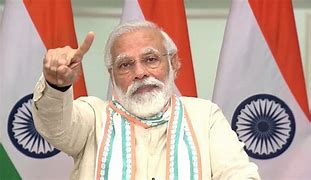Top News
Social media reason behind shifting of War into release of IAF pilot

The hysteria unleashed on social media platforms after Indian pilot Abhinandan Varthaman’s plane crashed in Pakistani territory on February 27 is partly responsible for the sudden shift in focus from fighting cross-border terrorism to bringing the pilot back home, experts believe.
The country erupted into joyous celebration following Varthaman’s release after spending over 60 hours in Pakistani captivity.
“Social media did help to build pressure on Pakistan to quickly release the pilot which is excellent. But the hectic activity on social media contributed to derailing the counter-terror measures that the government had initiated after the Pulwama attack on February 14 that killed 40 CRPF troopers,” Pavan Duggal, one of the nation’s top cyber law experts, told IANS.

In a video circulated on social media, the IAF pilot was shown as demonstrating great courage in withholding sensitive information, including his whereabouts in India. However, social media users wasted no time in giving away that information, without realising that whatever they posted were available for a global audience.
“Indian social media users did not exercise the restraint that they were supposed to have in times like these. They were posting without understanding their ramifications. The way they were circulating information, most of which were fake, demonstrated that they became victims of psychological warfare controlled by foreign powers,” Duggal said.

“Abhinandan was part of a broader strategy, but that broader strategy receded into the background partly due to the hectic activity on social media,” he said, adding, that a lot of what the mainstream media showed was somehow linked to content on social media.
Leading tech policy and media consultant Prasanto K. Roy agreed with Duggal when he said that much of the information that was moving fast in social media platforms like Twitter and Facebook was neither genuine nor true.
“We have seen a flurry of fake information and edited videos being circulated on social media from both sides of the border,” Roy told IANS, adding that some of those information circulated in social media might have been very painful to the family of the Indian pilot who was captured in Pakistan.
“The impact of social media has been overwhelmingly negative during the period following India’s an air strike targeting terror camps in Pakistan on February 26,” he added.
So what happens when people do not exercise self-restraint in a situation like the one India faced over the past 10 days?

“In such a case when self-regulation becomes ineffective, it will be a good idea to come up with specific guidelines which should govern the behaviour and the acts done on social media during important moments of our national interest,” Duggal said.
“We have in place something called Information Technology (Intermediaries guidelines) Rules, 2011 which often asks service providers to inform people not to do certain activities on their platform.
“But the IT Rules 2011 don’t have teeth. I think there should be now a dedicated provision for legal consequences should you violate these provisions,” Duggal noted.
Overall, he said, this episode can be seen as a learning experience for social media users as this is the first time they were confronted with a situation of this magnitude and importance.
“Social media users should become warriors for the country rather than impacting India’s sovereign interest. At the same time, the government should also not be influenced by the change in the course of social media discourses,” Duggal said.
Entertainment
Casino Days Reveal Internal Data on Most Popular Smartphones

International online casino Casino Days has published a report sharing their internal data on what types and brands of devices are used to play on the platform by users from the South Asian region.
Such aggregate data analyses allow the operator to optimise their website for the brands and models of devices people are actually using.
The insights gained through the research also help Casino Days tailor their services based on the better understanding of their clients and their needs.
Desktops and Tablets Lose the Battle vs Mobile
The primary data samples analysed by Casino Days reveal that mobile connections dominate the market in South Asia and are responsible for a whopping 96.6% of gaming sessions, while computers and tablets have negligible shares of 2.9% and 0.5% respectively.
The authors of the study point out that historically, playing online casino was exclusively done on computers, and attribute thе major shift to mobile that has unfolded over time to the wide spread of cheaper smartphones and mobile data plans in South Asia.
“Some of the reasons behind this massive difference in device type are affordability, technical advantages, as well as cheaper and more obtainable internet plans for mobiles than those for computers,” the researchers comment.
Xiaomi and Vivo Outperform Samsung, Apple Way Down in Rankings
Chinese brands Xiaomi and Vivo were used by 21.9% and 20.79% of Casino Days players from South Asia respectively, and together with the positioned in third place with a 18.1% share South Korean brand Samsung dominate the market among real money gamers in the region.
Cupertino, California-based Apple is way down in seventh with a user share of just 2.29%, overshadowed by Chinese brands Realme (11.43%), OPPO (11.23%), and OnePlus (4.07%).
Huawei is at the very bottom of the chart with a tiny share just below the single percent mark, trailing behind mobile devices by Motorola, Google, and Infinix.
The data on actual phone usage provided by Casino Days, even though limited to the gaming parts of the population of South Asia, paints a different picture from global statistics on smartphone shipments by vendors.
Apple and Samsung have been sharing the worldwide lead for over a decade, while current regional leader Xiaomi secured their third position globally just a couple of years ago.
Striking Android Dominance among South Asian Real Money Gaming Communities
The shifted market share patterns of the world’s top smartphone brands in South Asia observed by the Casino Days research paper reveal a striking dominance of Android devices at the expense of iOS-powered phones.
On the global level, Android enjoys a comfortable lead with a sizable 68.79% share which grows to nearly 79% when we look at the whole continent of Asia. The data on South Asian real money gaming communities suggests that Android’s dominance grows even higher and is north of the 90% mark.
Among the major factors behind these figures, the authors of the study point to the relative affordability of and greater availability of Android devices in the region, especially when manufactured locally in countries like India and Vietnam.
“And, with influencers and tech reviews putting emphasis on Android devices, the choice of mobile phone brand and OS becomes easy; Android has a much wider range of products and caters to the Asian online casino market in ways that Apple can’t due to technical limitations,” the researchers add.
The far better integration achieved by Google Pay compared to its counterpart Apple Pay has also played a crucial role in shaping the existing smartphone market trends.
Content provided by Adverloom

























